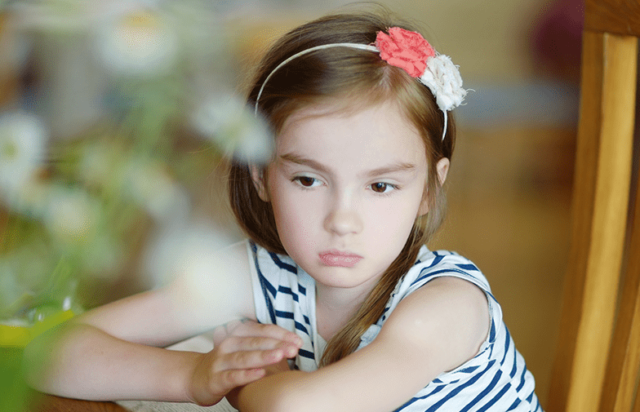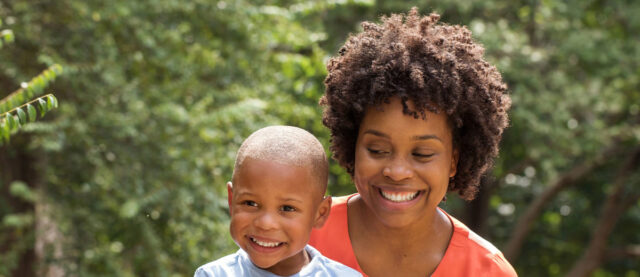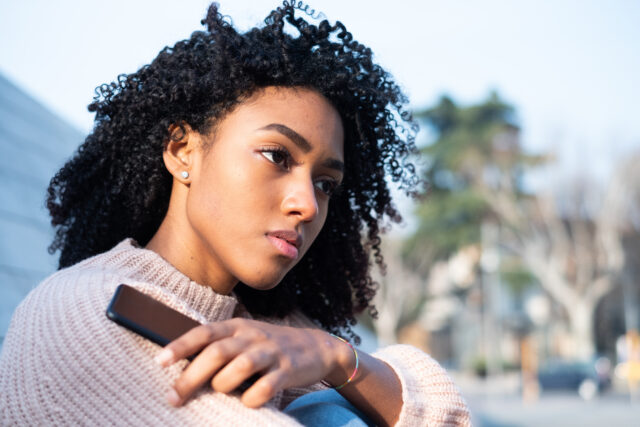Anxiety and Mindfulness
by
Rae Jacobson
Renee Jain is a life coach and founder of the programs GoStrengths! and GoZen! Jain has written about her own struggles with childhood anxiety, and sat down with me to talk about motherhood, anxiety, and mindfulness.
Rae: Let’s dive right in! You have a really compassionate, non-stigmatizing take on anxiety. You’re not a failure as a parent because your child is anxious. That must be so relieving for parents to hear.
Renee: I had bad anxiety as a kid, so I know how real a difficulty it can be. I remember it affecting the entire family. I know the pain that’s associated with having a child with anxiety for everyone.
Rae: So you can relate to both the kids and the parents.
Renee: Absolutely. In the last couple years I’ve had babies. Having kids yourself you realize that you can read every book on the shelf, do as much research as you can, but when you’re in the heat of the moment and a child comes to you in a panic, all that stuff gets thrown out the door.
I think in that moment you’re providing short-term relief and that feels good to everyone at the time but it doesn’t give kids the long-term relief that they need. So I focus a lot on changing those practices.
I’ll give you an example: My daughter is afraid of changing tables right now. I don’t know why! She’s two and she doesn’t want to go on any changing table except the one in her room, but if I’m in the airport that’s not really going to work.
Now, it’s much easier for me to avoid the situation because I know it will cause a meltdown. But I know from a research-based perspective that avoiding the anxiety trigger is just going to make things worse. The point being is that it’s really hard to put the research into practice!
Rae: You’ve written about the value of worry.
Renee: I think there is this mindset that we should have zero anxiety, that we should live a stress-free life and it’s just not rational. From an evolutionary perspective there’s a purpose to stress, there’s a purpose to worry. It can be a protective mechanism, and it can also be a catalyst for change. A little bit of stress can actually benefit you.
I think just knowing that a little bit of worry is not bad for you — that’s a HUGE win for a kid. If they’re sitting at a test and they’re having an anxiety attack, just telling themselves that not only is that okay, but that a little bit of stress can actually motivate you to do well can make all the difference. I think we really need to change our perspective. A little bit of stress is ok.
Rae: That brings me to the work you do bringing mindfulness into anxiety treatment…
Renee: It’s a practice that’s effective and you can learn it in a fairly quick manner. It’s freely available and your child can learn it and learn it use it on their own. Kids and parents are going to face challenges throughout their lives, and these skills will always be useful.
Rae: So how can you start developing the skills you need to use mindfulness to combat anxiety?
Renee: A lot of the time we’re either thinking about the future or the past. It’s interesting that anxiety is triggered by either thinking about the future or thinking about past things that have happened. You’re much less likely to be anxious if you’re focused on the present moment.
So there are a few very simple ways that you can bring yourself into the present moment. For example, just focusing on your senses — even for 60 seconds — on what you’re feeling, what is it that you’re touching, what can you taste, what do you see. Going through your five senses doesn’t take long, but it can bring you into the present moment. And again, it’s a mental habit. Let’s say you do that once a day, even when you’re not anxious. You’re building a skill you can use to help relax yourself when you are anxious.
Rae: I like that it’s something you can participate in without any kind of ritual. The idea of something you have to “practice” can feel like just another thing you have to do, but these are just habits you can incorporate into daily life.
Renee: Exactly. Mindfulness is just part of the day. You don’t have to beat yourself up for not being mindful. There are moments of being mindful every day. I’ll give you another simple one. We develop habits, and the reason we do that is so we can be efficient in our lives. It’s just easier when basic tasks are automated, and we do them so often they don’t require thought so it’s easy for our minds to wander. Brushing your teeth for example, you probably brush your teeth with your dominant hand and never think twice about it. But, say you tried switching hands. It would be awkward probably, but that novelty would bring you into the present moment, because you have to think about it! So doing something different activates you and takes you off autopilot.
Rae: So when it comes to anxious kids, do these strategies stay the same or do you need a whole new playbook?
Renee: The thing about little kids is that they’re naturally mindful. Children are never on autopilot — they’re very engaged in the present moment. They’re fascinated and excited about their environment. Maybe they smell something they’ve never smelled before or see something new and exciting, things that our adult minds have glossed over because we’re so used to them — that’s mindfulness.
So they start out very mindful, but we sort of beat it out of them as they get older and go to school. So how do we help a child who is anxious? Like grown-ups, a lot of that will be coming from worries about the future or memories of bad experiences, so bringing them into the present is still really helpful.
For kids you want to make things (A) fun and (B) quick. If a kid is feeling anxious you can try a quick exercise that’s fun. For example, I’ve used one I call the ninja walk, which is just what it sounds like. You have to walk around like a ninja for a minute, and ninjas are very quiet! So the kid is focusing on walking silently and sneaking around. It’s fun and the concentration helps pull them into the present.
The thing about little kids is that they’re very open. They’re up for pretty much anything. It’s pretty easy to teach a kid to be mindful, because in the end you’re just uncovering what’s natural to them.
Rae: It also sounds like by bringing mindfulness into your own day you can model that for your children.
Renee: It’s so funny, my daughter is two years old and she does deep breathing with me. It cracks me up because sometimes she breathes like a bull — not quite deep breathing — but I do it every morning and she does it with me! So, absolutely, modeling is a great teaching mechanism. And there’s a contagion effect to anxiety, so finding a way to be calm can help prevent your anxiety from spreading.
This is what I think. I think there are so many different tools that work for children in a variety of situations. There’s no one way. But there are a lot of little tools and techniques you can use to get through the day and once you find something that works and start using it, it becomes a part of you and that’s something you can fall back on for the rest of your life.
This article was last reviewed or updated on April 8, 2025.
Rae Jacobson
Rae Jacobson is a writer, ADHD expert, and former senior editor at the Child Mind Institute. Her work has appeared … Read Bio
Was this article helpful?
Related Reading
-
 The Art and Science of Mindfulness
How and why it helps us feel better and be mentally healthier
The Art and Science of Mindfulness
How and why it helps us feel better and be mentally healthier
-
 The Power of Mindfulness
How a meditation practice can help kids become less anxious, more focused
The Power of Mindfulness
How a meditation practice can help kids become less anxious, more focused
-
 Mindfulness in the Classroom
How it helps kids regulate behavior and focus on learning
Mindfulness in the Classroom
How it helps kids regulate behavior and focus on learning
-
 Best Anxiety Medication for Children and Teens
Antidepressants trump all others as the most effective evidence-based choice
Best Anxiety Medication for Children and Teens
Antidepressants trump all others as the most effective evidence-based choice
More Related




